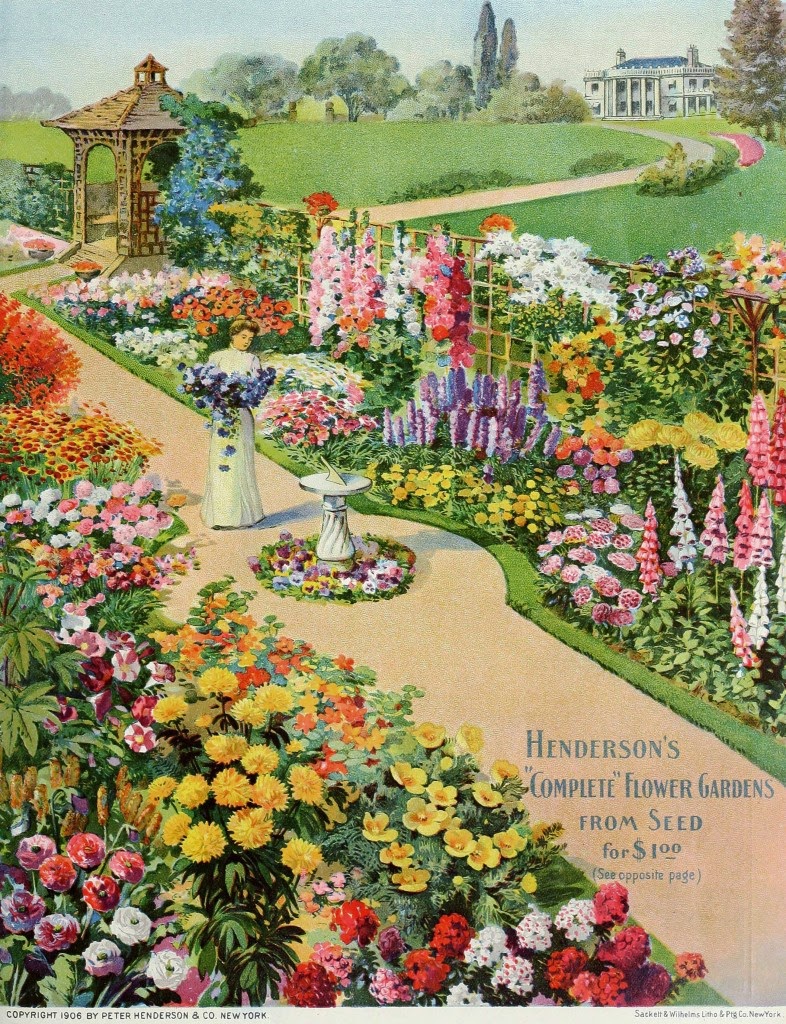And we picked more tomatoes. We put them on sandwiches. We sauteed them in olive oil with basil and minced garlic and served them over freshly-cooked pasta. We blended them with a peeled cucumber, some chopped green onions, some minced garlic, a little olive oil and some red wine vinegar and had gazpacho. Then we ate more of them straight off the vine.
But now the tidal wave of tomatoes we experienced earlier this year has slowed to a steady drip. I know the day is coming when I will pick the last few tomatoes that never got ripe and make fried green tomatoes. Then I have to resort to buying the kind of tomatoes that Garrison Keillor says were "strip-mined" in some far-off location. They just won't taste the same as a fresh tomato. And I will have to think longingly of next season's fresh tomatoes.
Tomatoes come in all shapes, colors and sizes. Recently I saw an ad for tomato seeds in an 1892 copy of the Ladies' Home Journal, that I found at an estate sale, that emphasized size:
"Raise the biggest Ponderosa Tomato
and Both Glory and Profit Await You."
The ad was for Peter Henderson & Co., with offices in New York and its own gardens in nearby New Jersey. New Jersey City University has an interesting web page devoted to the history of the company:
It records the beginnings of Peter Henderson's very successful business, as well as one belonging to his brother James:
Peter and James Henderson, brothers and immigrants from Scotland, founded what ultimately became two prosperous gardening businesses in Jersey City. Their companies flourished by specializing in different niches in the market gardening trade and by adopting cooperative business relationships with each other.
 |
| Peter Henderson |
The Henderson & Co. catalogs were gorgeously illustrated.
 |
| "The arrival of the illustrated catalog in the midst of winter was a harbinger of spring." |
Peter Henderson was more than just a seed salesman and marketing expert; he was a horticulturist with a passion for sharing his knowledge of gardening with other people. NJCU.edu notes:
At the time of his death, name of Peter Henderson was synonymous with gardening: "His was thought to be the largest, and was certainly the best appointed establishment of the kind in the world" (Jersey Journal, 17 January 1890).
The tomato mentioned in the ad was first introduced as "No. 400" in 1891. The company held a naming contest for their large, pinkish tomato, and its name was changed to "Ponderosa."
I have to wonder, though: How did a company verify the size of a prize-winning tomato, back in 1892? It wasn't like people could submit a digital picture of a tomato on a scale in real time, back then. And seed company representatives couldn't travel easily to all parts of the country, to weigh the individual entrants. The ad says that full details of the contest were explained in the catalog (which would be mailed to the interested home gardener "on receipt of 25 cts."). Perhaps one of their catalogs will turn up at an estate sale and I can read more about the contest.
For now, though, I think it's time for lunch. Perhaps I'll have some of the last of this year's crop of tomatoes, and start thinking about what to plant next season.
_________________________________________
Here's a blog post about Peter Henderson:
Old-school gardening enthusiasts still sell seeds from plants developed by Henderson. This is the Ponderosa -- still making gardeners happy after all these years. One company that sells heirloom seeds, says the average Ponderosa will weigh between 12 ounces and two pounds.





No comments:
Post a Comment